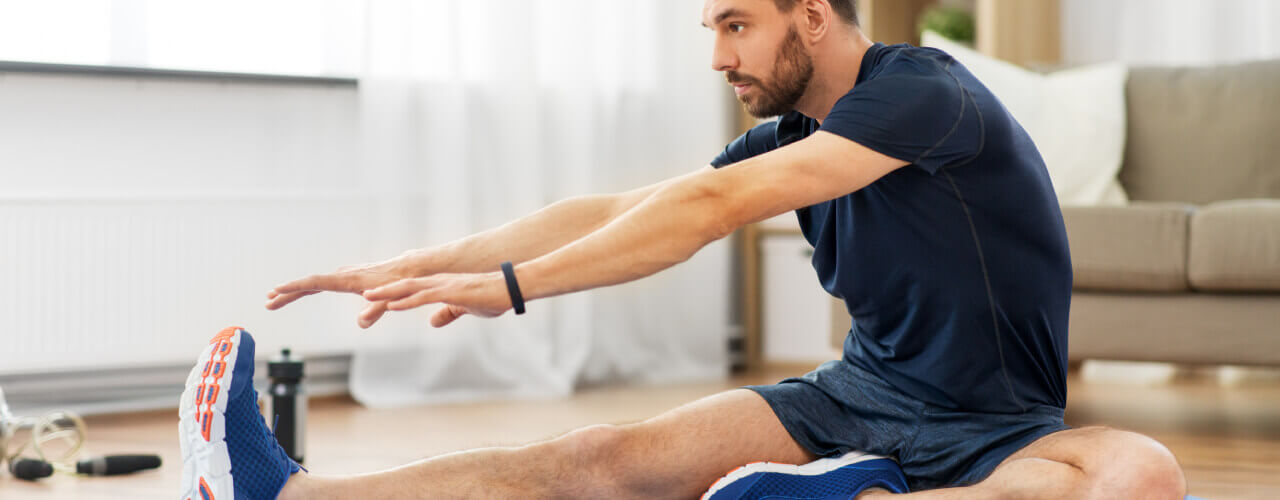Did You Know Stretching Both Before and After Workouts Could Help Decrease the Risk of Injury?
Do you make time to go to the gym a few times per week? If so, you should commend yourself for your efforts.
But at our physiotherapy clinic, we notice an interesting trend with a lot of our active patients: they go to the gym regularly, but they largely neglect stretching and mobility work.
We’re not sure why this is so common—maybe because stretching doesn’t seem as “exciting” as an actual workout.
But proper stretching before and after exercise has many proven health benefits and can improve your workout, too!
Talk to a physiotherapist today about which types of stretching you should focus on and find out which areas on your body have limited range of motion and flexibility.
In the meantime, keep reading to learn why stretching is so great for your body and mind.
Stretching and physiotherapy
There is a reason why stretching is a staple of physiotherapy. The act of stretching can do wonders for your health. In fact, according to Physiopedia,
“Stretching exercises have traditionally been included as part of a training and recovery program.
Evidence shows that physical performance in terms of maximal strength, number of repetitions and total volume are all affected differently by the each form of stretching – static stretch (SS), dynamic stretch (DS) and Pre-contraction stretching, Proprioceptive Neuromuscular Facilitation stretching (PNFS) being the most common type.
Stretching can help improve flexibility and range of motion about your joints. Improved flexibility may: Improve your performance in physical activities; Decrease your risk of injuries; Help your joints move through their full range of motion; Enable your muscles to work most effectively.”
Stretching provides numerous benefits to help your body keep itself healthier. One of the most important of these is stress relief. Everyday life throws lots of challenges at you, and the resulting stress can be held in your muscles.
This leads to tightness, spasms, and chronic discomforts such as headaches and neck pain. Stress also floods your body with “fight or flight” hormones such as cortisone and adrenaline. These imbalances can suppress your immune function, making you more vulnerable to viruses and other diseases. Hypertension is yet another dangerous consequence of chronic stress.
Regular stretches help your body release all that pent-up stress. By relaxing and loosening your muscles, you can maintain better control over your blood pressure, avoid chronic muscle pain, and keep your immune system ready for anything.
What can stretching before and after workouts offer?
1. Preparing for exercise ahead of time.
Dynamic stretching before a workout can help your muscles, ligaments, tendons, joint capsules, and other tissues become loosened up and prepared for exercise.
Pre-workout mobility also increases core body temperature and stimulates increased blood flow throughout the body so your tissues will have adequate amounts of oxygen to work.
Meanwhile, stretching after a workout helps you cool down appropriately and reduce tissue tightness and pain.
2. Working out better!
A personalized stretching routine that addresses your specific areas of postural imbalances and tightness can help you improve your range of motion.
When you combine this with strength training and aerobic conditioning, you can expect to function more efficiently during your workouts and enjoy greater stamina, power, and speed.
Since pre-workout mobility also prepares your body for exercise, it’ll also help you safely reach your desired workout intensity more quickly since you’ll be able to start a workout already warmed up and ready to go.
3. Relieving stress.
Stretching regularly—especially when combined with deep breathing and mindfulness exercises—is a great way to ease mental stress and even reduce signs and symptoms of depression and anxiety.
4. Reducing injury risk.
Some studies do show that stretching may reduce your risk of muscle strains, ligament sprains, joint damage, and other painful injuries common with sports and athletics.
5. Enhancing your health.
Regular stretching has been shown to improve your blood pressure and heart rate as well as maximize your overall mobility, especially as you age.
The importance of warm-ups
You may have heard that stretching “cold” muscles isn’t ideal—which is true. Our bodies need to be adequately warmed up prior to stretching—otherwise we increase our risk for injury and tissue damage.
This doesn’t mean you should never stretch at all before a workout, however. A simple 5-minute warm-up such as light jogging, brisk walking, and arm circles and leg swings is usually sufficient to get your joints and tissues warmed up and prepared for mobility work.
For many folks, dynamic stretches are the most effective for pre-workout mobility. Meanwhile, they’ll save static stretches and foam rolling for after the workout. Wondering what works best for you?
Our physiotherapy staff is happy to help you problem-solve and figure out the best routine for your body.
Want more help? We’ve got you covered!
If you’d like to become more disciplined with a mobility routine and need some inspiration and education on the best mobility moves your body needs, schedule an appointment with a physiotherapist today.
Sources:
Tags: physiotherapist, chronic pain, Natural Pain Relief, Stretching, Aches and Pains, Nutrition, Natural Treatment, Physical Health, Opioids, Physical Activity, physiotherapy, Rehabilitation


